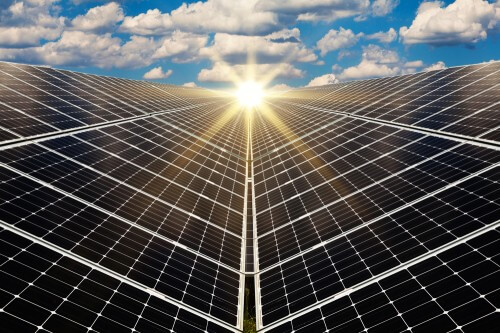The innovative photovoltaic system achieved an energy conversion rate of 12.8% and was stable for more than 1000 hours under full solar radiation. The discovery is expected to significantly reduce the cost of commercial solar cells.

[Translation by Dr. Nachmani Moshe]
Scientists have succeeded in developing a particularly efficient solar cell based on the mineral perovskite [CaTiO3] that does not require the existence of a hole-conducting layer. The innovative photovoltaic system achieved an energy conversion rate of 12.8% and was stable for more than 1000 hours under full solar radiation. The discovery is expected to significantly reduce the cost of commercial solar cells.
Solar cells based on the mineral perovskite [3CaTiO] hold great promise in advancing the topic of solar energy into the commercial market. Solar cells make use of a hole-transferring layer that encourages the efficient transfer of electric current after exposure to sunlight. At the same time, the production of organic materials with such a layer is very expensive and lacks prolonged thermal stability.
Now, the prestigious scientific journal Science reports that a team of researchers from China, led by Professor Hongwei Han, has succeeded in developing a highly efficient solar cell based on the mineral perovskite that does not require the existence of a hole-conducting layer, with an energy conversion efficiency of 12.8% and longer-lasting stability From 1000 hours under full sunlight and moderate temperature. Organic-inorganic hybrid systems of methylammonium lead halide and perovskites have attracted a lot of attention in the field of photovoltaic components of tiny layers, thanks to their high absorption coefficient, high conductivity of charge carriers and long pulse length. At the same time, these cells are also expensive due to the existence of a hole-conducting layer that requires the use of extremely clean materials and complex production processes.
The scientists made the new solar cell by drop-casting a solution of lead iodide, methylammonium iodide and 5-ammonium valeric acid through a porous carbon layer. The scaffolding system of the solar cell was assembled with the help of a double layer of titanium dioxide and zirconium dioxide coated with a porous carbon layer and an amino acid-type building material designed to encourage the deficit and growth of the crystals of the mineral perovskite inside the pores. The resulting mineral crystals exhibited higher electric charge generation and collection efficiency than conventional perovskite cells. The new system consisting of three layers containing an organic hole conductor also turned out to be extremely stable.
Solar cells of this type can be used to meet the growing demands for renewable energy in the future, this is in light of the fact that they overcome one of the main limiting factors - the financial cost.

2 תגובות
This is a very low efficiency, there are commercial cells that reach an efficiency of 20 percent
What about the high toxicity of lead? Is it really such a good idea to use it?